
How to Use Vibration sensor: Examples, Pinouts, and Specs
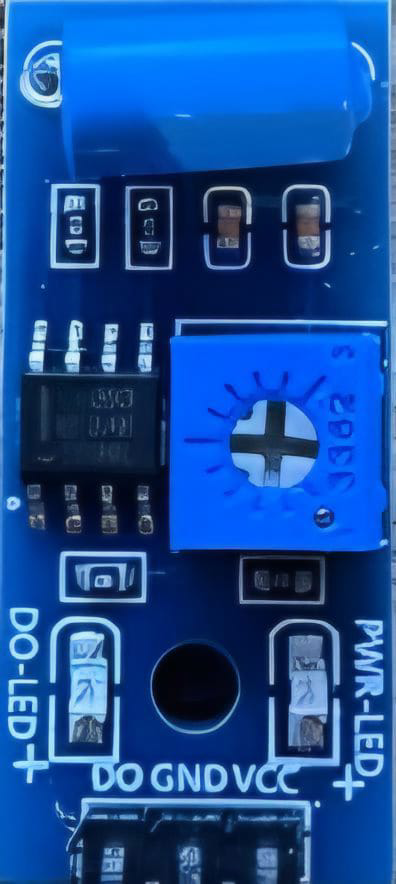
 Design with Vibration sensor in Cirkit Designer
Design with Vibration sensor in Cirkit DesignerIntroduction
The SW-420 vibration sensor, manufactured by Arduino, is a compact and reliable device designed to detect and measure vibrations or oscillations in an object or environment. It is widely used in applications such as security systems, industrial monitoring, and automation. The sensor outputs a digital signal when vibrations exceed a certain threshold, making it ideal for detecting motion, impacts, or disturbances.
Explore Projects Built with Vibration sensor
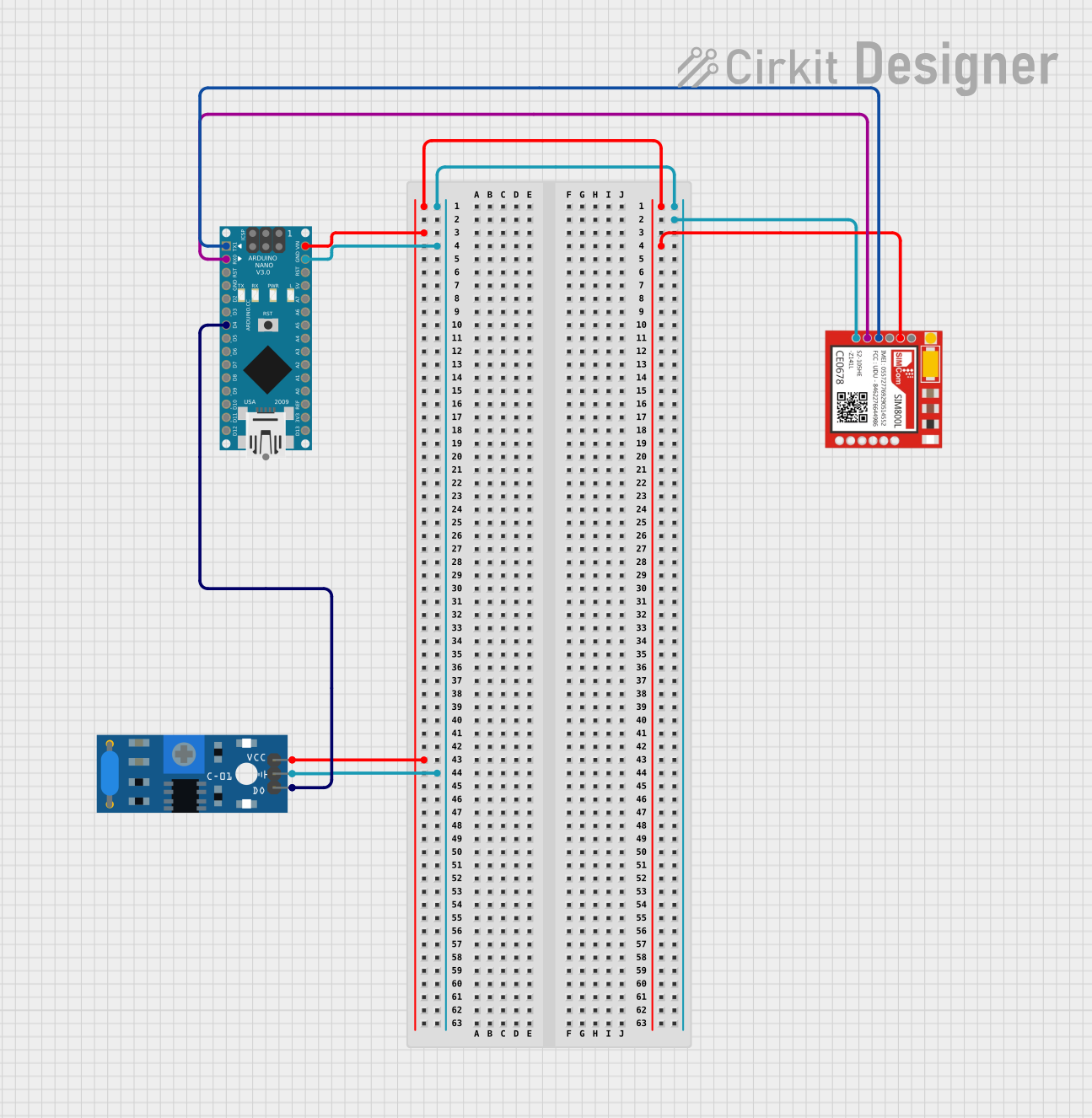
 Open Project in Cirkit Designer
Open Project in Cirkit Designer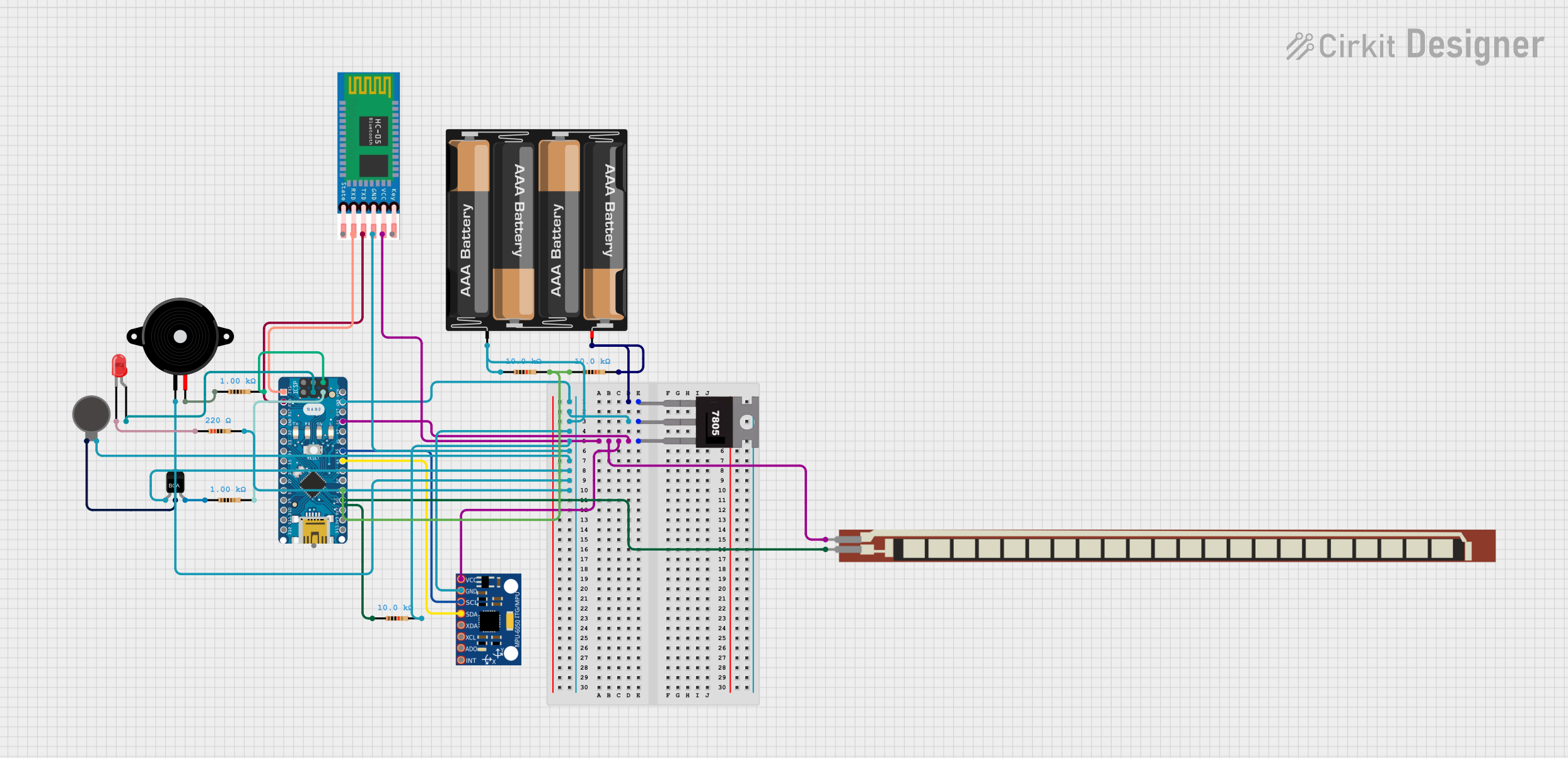
 Open Project in Cirkit Designer
Open Project in Cirkit Designer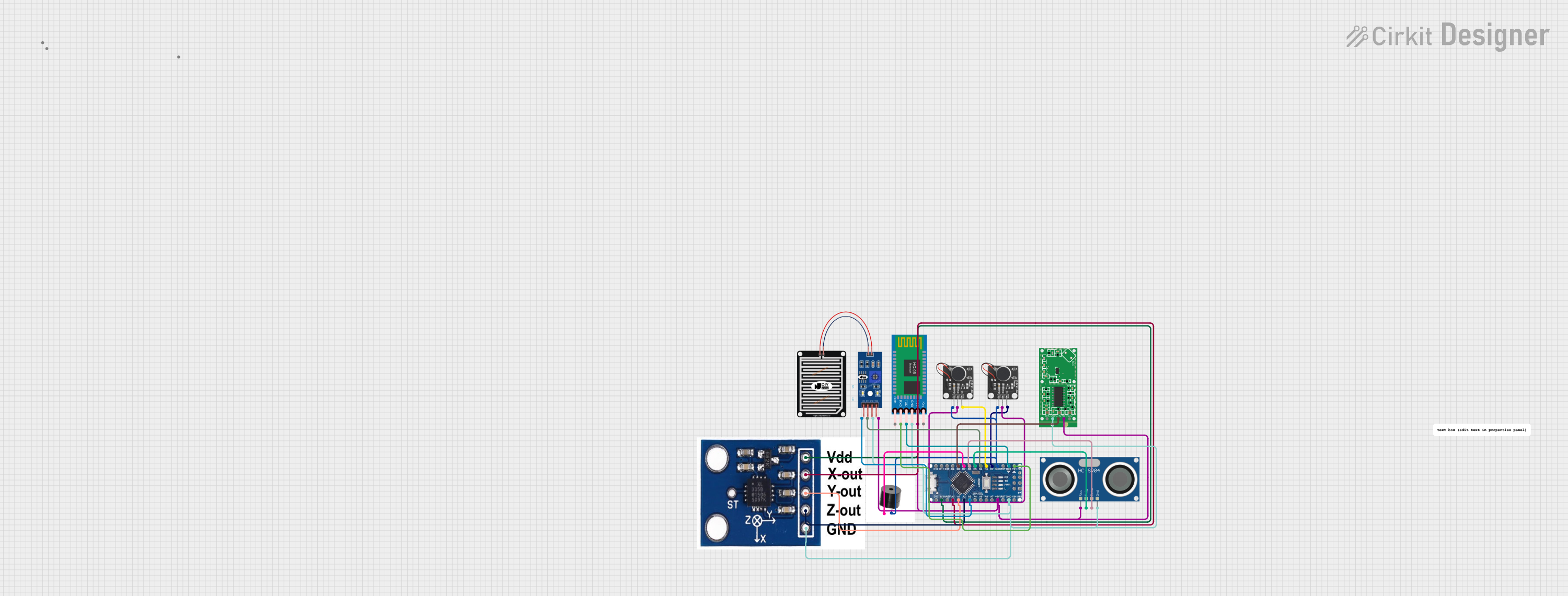
 Open Project in Cirkit Designer
Open Project in Cirkit Designer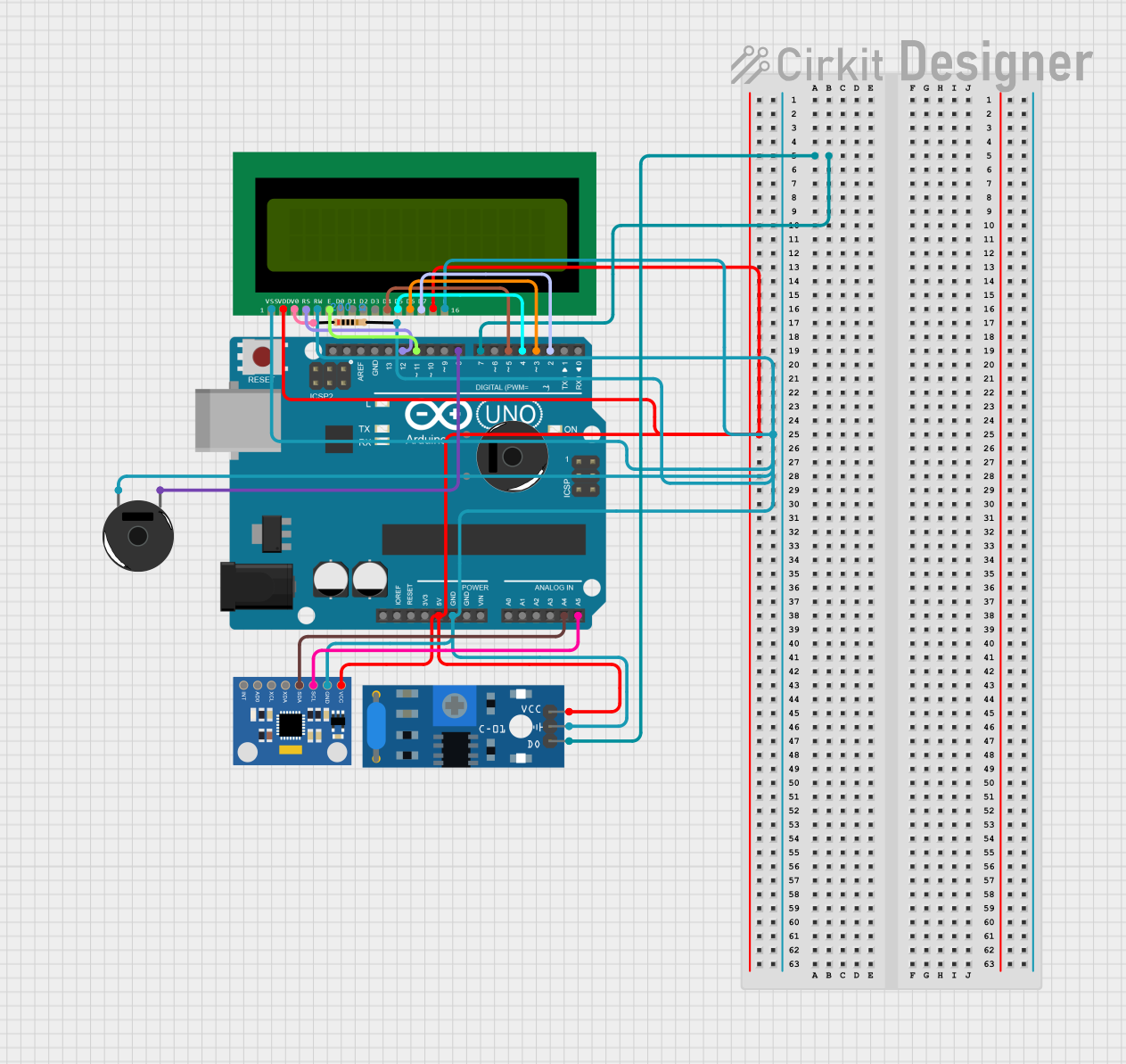
 Open Project in Cirkit Designer
Open Project in Cirkit DesignerExplore Projects Built with Vibration sensor

 Open Project in Cirkit Designer
Open Project in Cirkit Designer
 Open Project in Cirkit Designer
Open Project in Cirkit Designer
 Open Project in Cirkit Designer
Open Project in Cirkit Designer
 Open Project in Cirkit Designer
Open Project in Cirkit DesignerCommon Applications
- Security systems (e.g., detecting unauthorized access or tampering)
- Industrial equipment monitoring (e.g., detecting abnormal vibrations in machinery)
- Earthquake detection systems
- Smart home automation (e.g., detecting door or window vibrations)
- Robotics and interactive projects
Technical Specifications
The SW-420 vibration sensor is designed for ease of use and integration into various electronic systems. Below are its key technical details:
| Parameter | Specification |
|---|---|
| Operating Voltage | 3.3V to 5V DC |
| Output Type | Digital (High/Low) |
| Sensitivity Adjustment | Adjustable via onboard potentiometer |
| Output Signal Voltage | 0V (Low) or Vcc (High) |
| Dimensions | 32mm x 14mm x 10mm |
| Operating Temperature | -40°C to +85°C |
Pin Configuration and Descriptions
The SW-420 vibration sensor module has three pins for easy interfacing:
| Pin | Name | Description |
|---|---|---|
| 1 | VCC | Connect to the positive supply voltage (3.3V–5V). |
| 2 | GND | Connect to the ground of the power supply. |
| 3 | OUT | Digital output pin. Outputs HIGH when vibration is detected. |
Usage Instructions
How to Use the SW-420 in a Circuit
- Power the Sensor: Connect the VCC pin to a 3.3V–5V power source and the GND pin to the ground.
- Connect the Output: Connect the OUT pin to a digital input pin of your microcontroller (e.g., Arduino UNO).
- Adjust Sensitivity: Use the onboard potentiometer to adjust the vibration sensitivity. Turning it clockwise increases sensitivity, while turning it counterclockwise decreases it.
- Monitor the Output: The OUT pin will output a HIGH signal when vibrations exceed the set threshold and LOW otherwise.
Important Considerations and Best Practices
- Mounting: Securely mount the sensor to the surface or object you want to monitor for vibrations. Loose mounting may result in inaccurate readings.
- Power Supply: Ensure a stable power supply to avoid false triggers or erratic behavior.
- Debouncing: If the sensor is used in a noisy environment, consider implementing software debouncing to filter out false signals.
- Threshold Adjustment: Test and fine-tune the sensitivity threshold for your specific application to avoid false positives or missed detections.
Example Code for Arduino UNO
Below is an example of how to use the SW-420 vibration sensor with an Arduino UNO:
// SW-420 Vibration Sensor Example Code
// Connect the OUT pin of the sensor to Arduino digital pin 2
const int sensorPin = 2; // Pin connected to the sensor's OUT pin
const int ledPin = 13; // Built-in LED pin for visual feedback
void setup() {
pinMode(sensorPin, INPUT); // Set sensor pin as input
pinMode(ledPin, OUTPUT); // Set LED pin as output
Serial.begin(9600); // Initialize serial communication
}
void loop() {
int sensorValue = digitalRead(sensorPin); // Read the sensor output
if (sensorValue == HIGH) {
// Vibration detected
digitalWrite(ledPin, HIGH); // Turn on the LED
Serial.println("Vibration detected!");
} else {
// No vibration
digitalWrite(ledPin, LOW); // Turn off the LED
}
delay(100); // Small delay to stabilize readings
}
Troubleshooting and FAQs
Common Issues and Solutions
No Output Signal
- Cause: Incorrect wiring or loose connections.
- Solution: Double-check all connections, ensuring VCC, GND, and OUT are properly connected.
False Triggers
- Cause: Sensitivity set too high or environmental noise.
- Solution: Adjust the potentiometer to lower the sensitivity and ensure the sensor is mounted securely.
Sensor Not Responding
- Cause: Insufficient power supply or damaged sensor.
- Solution: Verify the power supply voltage and replace the sensor if necessary.
Erratic Behavior
- Cause: Electrical noise or unstable power supply.
- Solution: Use a decoupling capacitor (e.g., 0.1µF) across the VCC and GND pins to stabilize the power supply.
FAQs
Q1: Can the SW-420 detect small vibrations?
A1: Yes, the sensitivity can be adjusted using the onboard potentiometer to detect small or large vibrations.
Q2: Is the SW-420 suitable for outdoor use?
A2: The sensor is not waterproof or weatherproof. For outdoor use, ensure it is enclosed in a protective casing.
Q3: Can I use the SW-420 with a 3.3V microcontroller?
A3: Yes, the sensor operates within a voltage range of 3.3V to 5V, making it compatible with 3.3V systems.
Q4: How do I know if the sensor is working?
A4: When vibrations are detected, the OUT pin will output a HIGH signal, which can be monitored using an LED or a microcontroller.
By following this documentation, you can effectively integrate the SW-420 vibration sensor into your projects and troubleshoot any issues that arise.